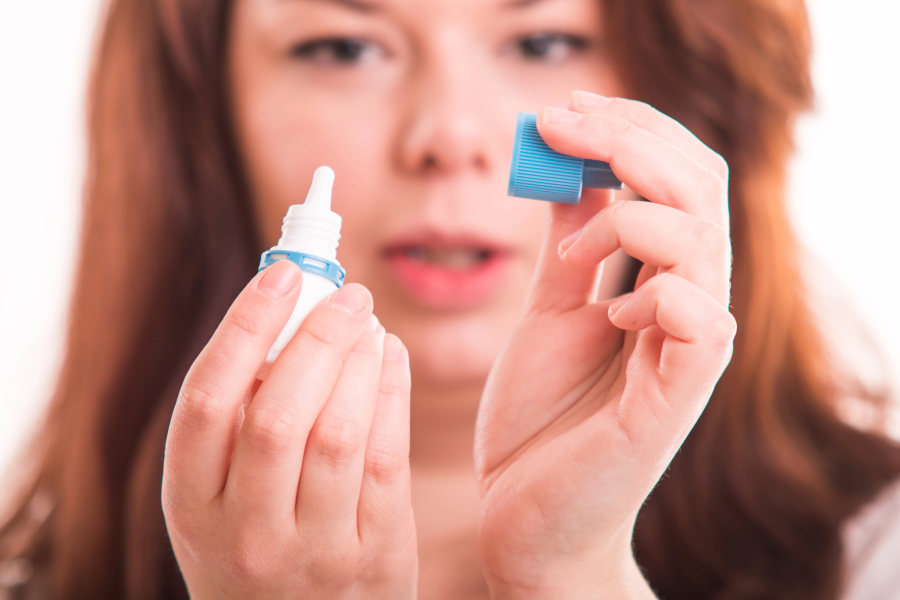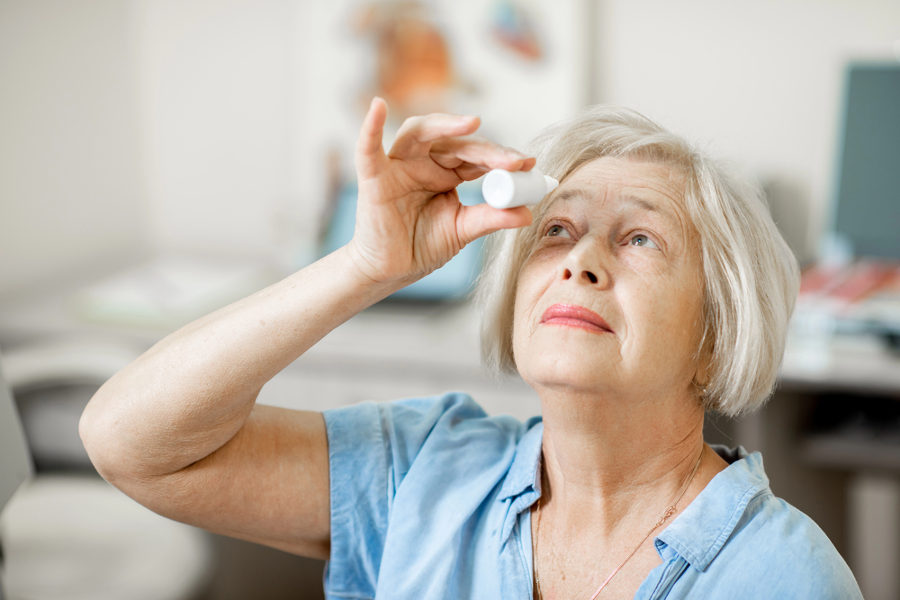Best Eye Drops for Dry Eyes in 2025: Optometrist Advice
Have you ever wondered why your dry eyes don’t improve despite using over-the-counter drops? Could your choice of eye drops be making your dry eyes worse?
Many people would be surprised to learn that not all eye drops are created equal.
I’m Martin Robinson, the Owner and Principal Optometrist at Martin’s Eyecare. With years of experience helping patients in Tasmania to manage dry eyes, I understand firsthand how frustrating it can be to find effective relief. I’m passionate about educating patients on what truly works and providing guidance that clears up common misconceptions.
Choosing the best eye drops for dry eyes in 2025 could make a significant difference in your eye care management. Keep reading if you want to learn more today.
KEY TAKEAWAYS
- You can start with preserved eye drops, however we recommend swapping to preservative-free drops if you have to use them more than 3-5 times a day, as this helps prevent irritation from the preservative ingredients.
- Understanding the difference between evaporative, aqueous-deficient and mixed dry eye can guide better treatment choices.
- There are a range of prescription and non-prescription eye drops depending on your condition
- Follow correct usage and storage instructions for your eye drops to help prevent eye infections and other complications
- There are a range of treatment strategies for dry eyes that do not rely solely on eye drops

Common Causes of Dry Eyes and Their Impact
Why do our eyes sometimes feel like they’re burning, gritty, or constantly irritated? The truth is, dry eyes stem from a variety of factors that affect how tears are produced or maintained.
Environmental conditions often play a large role. Spending hours staring at screens in an air-conditioned room, or braving harsh winds can disrupt the delicate tear balance. Even everyday habits, like applying waterproof mascara or using lash extensions, can exacerbate dryness. Over time, these subtle but consistent influences can leave your eyes yearning for relief.
Age and hormonal changes can bring more complications. Tear production naturally slows as we get older. Menopause introduces additional changes that destabilise the tear film, and men undergoing hormonal treatments for prostate cancer face similar challenges.
For others, underlying health issues might be the culprit. Autoimmune diseases, diabetes, and thyroid-related conditions often include dry eyes as a symptom. Certain medications such as antihistamines, decongestants, hormone replacement therapy, antidepressants, and medicines for high blood pressure, acne, birth control and Parkinson’s Disease can all interfere with tear production.
Best Eye Drops for Dry Eyes: Preservative vs. Preservative-Free
Frequent exposure to preservatives like benzalkonium chloride (BAK), a common ingredient in many eye drops, can cause irritation or even damage to the delicate ocular surface, particularly with long-term use. This is why we strongly recommend preservative-free eye drops for individuals who need frequent application. Unlike their preservative-containing counterparts, these drops are gentler on sensitive eyes, making them ideal for those managing chronic dryness.
Preservative-free options are also particularly beneficial for individuals recovering from eye surgery, where the ocular surface is more vulnerable. By avoiding unnecessary exposure to harsh chemicals, they promote healing and maintain comfort.
Best Eye Drops Depending On Your Dry Eye Condition
Dry eyes can feel like a persistent obstacle to daily comfort, but the first step to relief is in understanding the cause. For those who wear contact lenses, the situation demands extra care. Select drops that are compatible with lenses and follow safe application practices to ensure your eyes remain hydrated without compromising contact lens integrity.
Aqueous-Deficient vs. Evaporative Dry Eye
- Low osmolarity drops are highly effective for aqueous-deficient dry eye. These drops work by reducing the salt concentration in your tear film, restoring the balance needed to keep your eyes hydrated and comfortable. They are a good choice if your eyes struggle to produce enough tears. e.g. Refresh Optive Advanced, TheraTears, and Systane Gel Drops.
- Hyaluronic acid drops are another excellent option for aqueous-deficient dry eye. These drops not only hydrate the surface of the eye but also help retain moisture for extended periods. Their ability to reduce irritation and enhance tear film stability makes them a preferred choice for many patients with insufficient tear production. e.g. Systane Hydration, Hylo-Forte, Cationorm, and Blink-Intensive Tears.
- Lipid-based drops are particularly beneficial for evaporative dry eye cases. By replenishing the lipid (oil) layer of the tear film, they prevent rapid tear evaporation and reduce symptoms like grittiness and irritation. Often, these drops are used in combination with low osmolarity or hyaluronic acid drops to target multiple aspects of dry eye simultaneously. e.g. Systane Balance, Systane Complete, Refresh Optive Mega-3, Cationorm, Novatears, and Novatears Omega.
Drops for Contact Lens Wearers
- Rewetting drops labeled safe for contact lenses are important for lens wearers. They provide hydration to both the lenses and eyes to reduce dryness and discomfort. Unlike standard eye drops, these are free from benzalkonium chloride (BAK), a preservative that can bind to lenses, causing irritation and potential lens damage.
- For severe dry eye treatments it’s often necessary to remove contact lenses before using certain eye drops. It’s best to remove lenses to ensure the drops reach the eye’s surface directly, improving effectiveness and preventing lens damage or discomfort. Always verify compatibility with your optometrist if unsure.
The right product will depend on what your eyes need most. Whether your condition is driven by insufficient tear production, rapid evaporation, or contact lens use, there are drops to match your requirements.

Additional Treatments for Severe Dry Eye
When dealing with severe dry eye, over-the-counter treatments may no longer provide adequate relief, making it necessary to explore advanced options.
From prescription-only eye drops to specialised in-clinic treatments, there are a variety of effective solutions tailored to persistent or complex cases of dry eye.
Prescription-only eye drops provide targeted solutions for chronic conditions. Options like cyclosporine (Ikervis or Cequa) reduce inflammation and help stabilise tear production over time. These drops are particularly beneficial for patients with autoimmune-related dryness or severe symptoms that don’t respond to other treatments.
Therapies such as Novatears and Novatears Omega focus on controlling tear evaporation. By reinforcing the lipid layer of the tear film, these treatments address a major cause of evaporative dry eye. They’re an excellent choice for patients with Meibomian gland dysfunction or those who experience rapid tear evaporation.
Gels and ointments offer prolonged relief, particularly for nighttime use. These thicker formulations coat the eyes and provide extended hydration, ensuring comfort during sleep. However, their primary drawback is temporary blurry vision, which can limit their use during the day.
Non-drop interventions can enhance tear production and address underlying causes of dry eye.
- Eyelid hygiene practices using hypochlorous acid cleansers or tea tree foams help reduce irritation and prevent eyelid debris from exacerbating dryness. Regular use of these products maintains a clean and healthy eyelid margin.
- Zocular products, including foams, gels, and the ZEST kit, provide in-clinic treatments to thoroughly clean the eyelid and eyelash area. These targeted solutions improve the function of the Meibomian glands and reduce inflammation.
- Nulids eyelid massage devices are designed to enhance Meibomian gland function by stimulating oil production. Regular use can significantly improve the tear film’s stability and reduce evaporation.
- Blephasteam eyelid treatments use gentle heat to unblock Meibomian glands, restoring their ability to produce essential oils for the tear film. This comfortable, in-office procedure is highly effective for patients with gland dysfunction.
- Intense Pulsed Light (IPL) therapy is an innovative treatment for certain dry eye cases. It addresses inflammation and stimulates the glands to produce a healthy lipid layer, offering relief for those who don’t respond well to traditional drops.
Tips for Safe Use of Eye Drops
How can you ensure that your eye drops provide the relief you need without causing more problems?
Start by washing your hands thoroughly before applying any eye drops. This simple step prevents introducing bacteria or irritants to your eyes. When you apply drops, be cautious not to let the dropper tip touch your eye or any surface so that it remains sterile. Even a brief touch can introduce contaminants that compromise the effectiveness of the drops.
Follow the instructions on the packaging carefully, including dosage and frequency. Overuse can sometimes lead to rebound effects, especially with anti-redness drops, causing more irritation than relief. If you’re using multiple types of eye drops, wait at least five minutes between applications to give each one time to work without dilution.
Another important tip is to be mindful of expiration dates. Using expired drops can reduce their effectiveness or increase the risk of infection. Always store your drops as instructed, usually in a cool, dry place.
By taking these simple precautions, you can maximise the benefits of your eye drops while ensuring your eyes remain healthy and irritation-free.
If you’d like a walk-through of the proper way to apply eye drops, watch the following video by Dr. Joseph Allen from the Doctor Eye Health YouTube channel.
Brands We Like At Martin’s Eyecare
When it comes to recommending eye drops, I rely on tried-and-true brands that consistently deliver relief and comfort for dry eyes. Each brand we endorse at Martin’s Eyecare has been carefully selected based on its effectiveness, safety, and compatibility with a range of dry eye conditions.
For hydration and long-lasting moisture, Systane Hydration is a standout choice. It’s formulated with hyaluronic acid, which holds water on the eye’s surface for extended relief. Similarly, Cationorm offers multi-layered support, addressing both aqueous deficiency and lipid layer instability.
For those with more severe symptoms, Hylo-Forte is a reliable option. Its preservative-free formula is ideal for sensitive eyes, providing relief without irritation.
In cases requiring prescription treatment, Ikervis and Cequa are top recommendations. These drops target underlying inflammation, a common factor in chronic dry eye, helping to stabilise tear production and improve overall comfort.
Choosing the right product can make all the difference, and these trusted brands have consistently proven to meet the needs of our patients. Whether it’s mild dryness or more persistent symptoms, there’s an option to suit every pair of irritated eyes.
CONCLUSION
In order to choose the most effective eye drops and treatments, you need to understand the type of dry eye you have. Aqueous deficiency is when your eyes aren’t producing enough tears. Evaporative dry eye is when your tear film dries too quickly. Many people experience a combination of these two problems.
Low osmolarity and hyaluronic acid drops are most suitable for aqueous deficient dry eyes. Lipid-based drops, on the other hand, can be beneficial for those with evaporative dry eye, and help to improve comfort.
We strongly recommend preservative-free eye drops for frequent users or those recovering from eye surgery. Many products contain benzalkonium chloride (BAK), which can potentially cause irritation or damage to the surface of the eye if overused.
Severe dry eye conditions may require prescription eye drops like Ikervis or Cequa to stabilize tear production.
Prolonged use of the wrong products can potentially harm your eyes. If you are are unsure, it would be wise to consult with your optometrist about the best eye drops for your dry eyes.
Finally, it’s important to know that clinical treatments such intense pulsed light (IPL) therapy may also be an effective treatment strategy. If you continue to experience dry eye symptoms despite over-the-counter solutions, then it could be time to talk with your optometrist about these other available options.
Don’t let another day pass with discomfort — take control of your eye health today.
